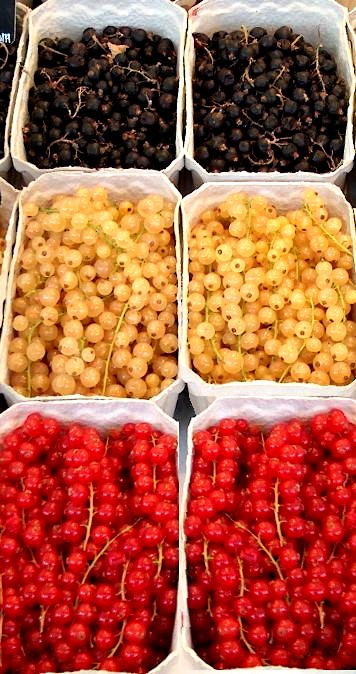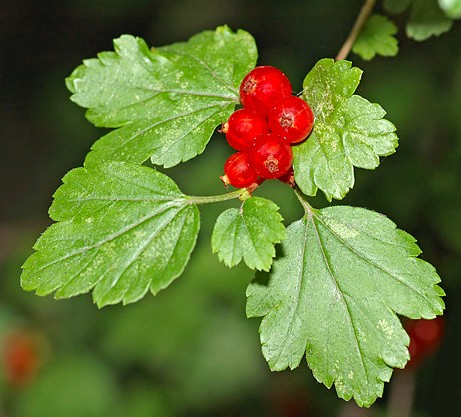Lessico
Ribes

Dall'arabo ribas, rabarbaro. Nome comune del genere Ribes di piante della famiglia Sassifragacee con circa 150 specie dei Paesi temperati dell'emisfero settentrionale e delle Ande. Sono arbusti con foglie caduche, alterne, palmate, fiori a 5 petali in grappoli, bacche spesso vivacemente colorate ed eduli.
In Italia è coltivato il ribes rosso (Ribes rubrum) anche nella varietà a bacche gialle, mentre nell'Europa centro-settentrionale è più diffuso in coltura il ribes nero (Ribes nigrum). Sulle Alpi vivono Ribes alpinum, Ribes petraeum e Ribes grossularia (ribes spinoso o uva spina). I frutti sono utilizzati per marmellate (ribes rosso) e sciroppi (ribes nero).

Ribes is a genus of about 150 species of flowering plants, usually treated as the only genus in the family Grossulariaceae. The genus is native throughout the temperate regions of the Northern Hemisphere. Ribes includes the currants, including the edible currants (blackcurrant, redcurrant and whitecurrant), gooseberries, and many ornamental plants. The Ribes currant should not be confused with the Zante currant grape.
Currants
are used as food plants by the larvae of some Lepidoptera species; see list of
Lepidoptera that feed on currants. Seven subgenera are recognised. A few
taxonomists place the gooseberry species in a separate genus, Grossularia,
despite the Jostaberry gooseberry/blackcurrant hybrid. There are restrictions
on growing Ribes species in many US states as they are a host for White Pine
Blister Rust.
Blackfoot Indians used blackcurrant root (Ribes hudsonianum) for the
treatment of kidney diseases and menstrual and menopausal problems. Cree
Indians used the fruit of Ribes glandulosum as a fertility enhancer to
assist women in becoming pregnant. Currant root and seeds are high in
gamma-linolenic acid, also called GLA. GLA has been clinically verified as an
effective treatment for pre-menstrual syndrome.

Ribes alpinum
Les groseilliers (genre Ribes) sont des arbustes de la famille des Grossulariacées, originaires des régions tempérées de l'hémisphère nord, dont plusieurs espèces sont cultivées pour leurs fruits rouges tels que la groseille et le cassis ou comme plantes ornementales. La casseille est l'hybridation entre le groseiller épineux et le cassis.
Les groseilliers se multiplient facilement par bouture, marcotte ou semis. Les boutures ou marcottes fructifient en 2 à 3 ans alors que les semis nécessitent 4 à 5 ans. Des pucerons jaune-orangé Cryptomyzus ribis vivants au revers du limbe peuvent provoquer des boursouflures rouges sur les feuilles.